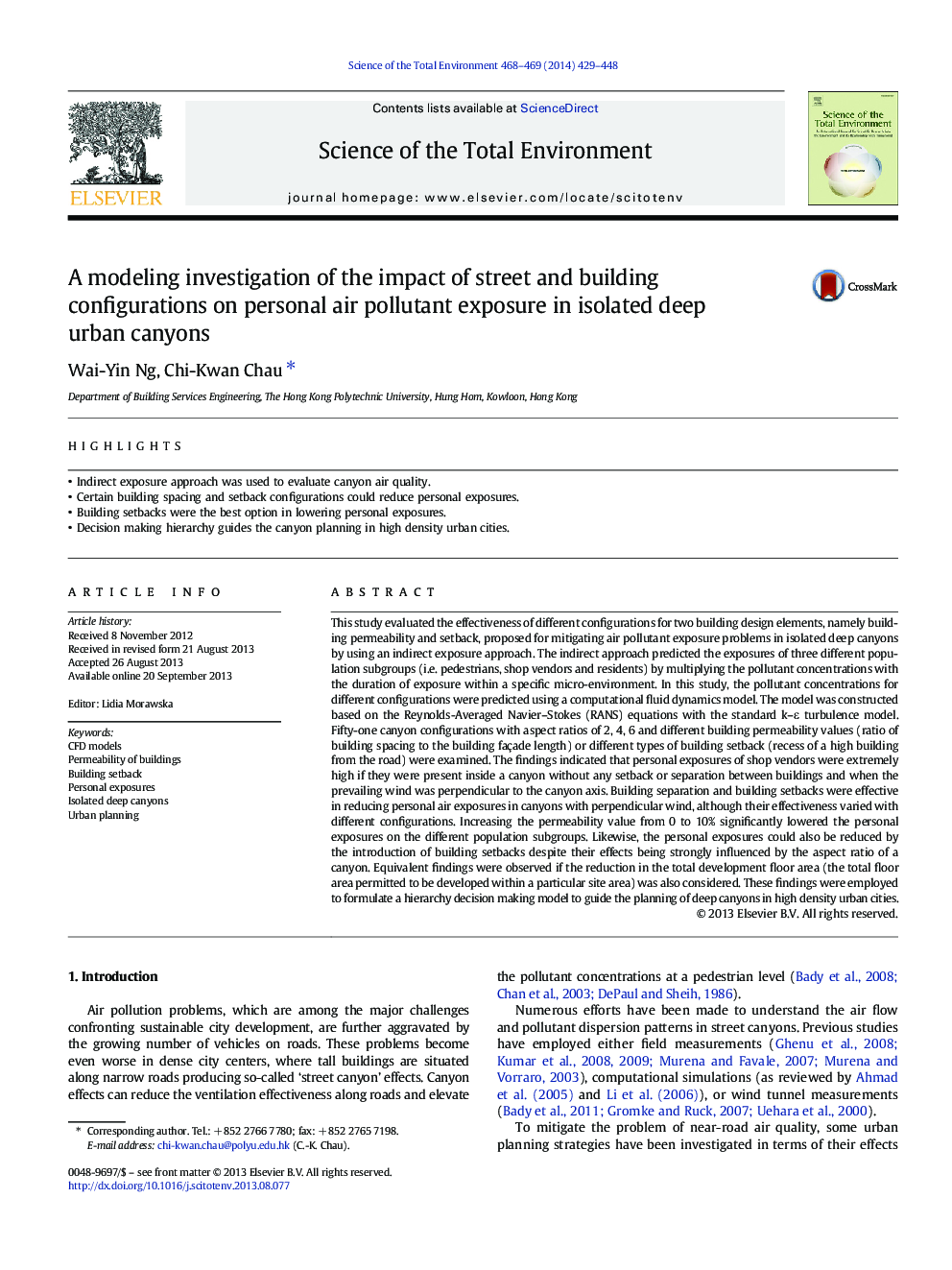| Article ID | Journal | Published Year | Pages | File Type |
|---|---|---|---|---|
| 6332505 | Science of The Total Environment | 2014 | 20 Pages |
Abstract
This study evaluated the effectiveness of different configurations for two building design elements, namely building permeability and setback, proposed for mitigating air pollutant exposure problems in isolated deep canyons by using an indirect exposure approach. The indirect approach predicted the exposures of three different population subgroups (i.e. pedestrians, shop vendors and residents) by multiplying the pollutant concentrations with the duration of exposure within a specific micro-environment. In this study, the pollutant concentrations for different configurations were predicted using a computational fluid dynamics model. The model was constructed based on the Reynolds-Averaged Navier-Stokes (RANS) equations with the standard k-ε turbulence model. Fifty-one canyon configurations with aspect ratios of 2, 4, 6 and different building permeability values (ratio of building spacing to the building façade length) or different types of building setback (recess of a high building from the road) were examined. The findings indicated that personal exposures of shop vendors were extremely high if they were present inside a canyon without any setback or separation between buildings and when the prevailing wind was perpendicular to the canyon axis. Building separation and building setbacks were effective in reducing personal air exposures in canyons with perpendicular wind, although their effectiveness varied with different configurations. Increasing the permeability value from 0 to 10% significantly lowered the personal exposures on the different population subgroups. Likewise, the personal exposures could also be reduced by the introduction of building setbacks despite their effects being strongly influenced by the aspect ratio of a canyon. Equivalent findings were observed if the reduction in the total development floor area (the total floor area permitted to be developed within a particular site area) was also considered. These findings were employed to formulate a hierarchy decision making model to guide the planning of deep canyons in high density urban cities.
Related Topics
Life Sciences
Environmental Science
Environmental Chemistry
Authors
Wai-Yin Ng, Chi-Kwan Chau,
